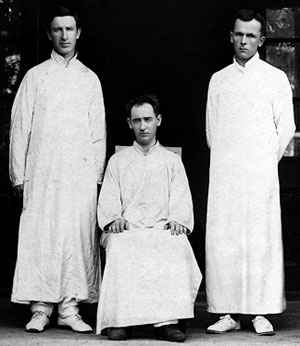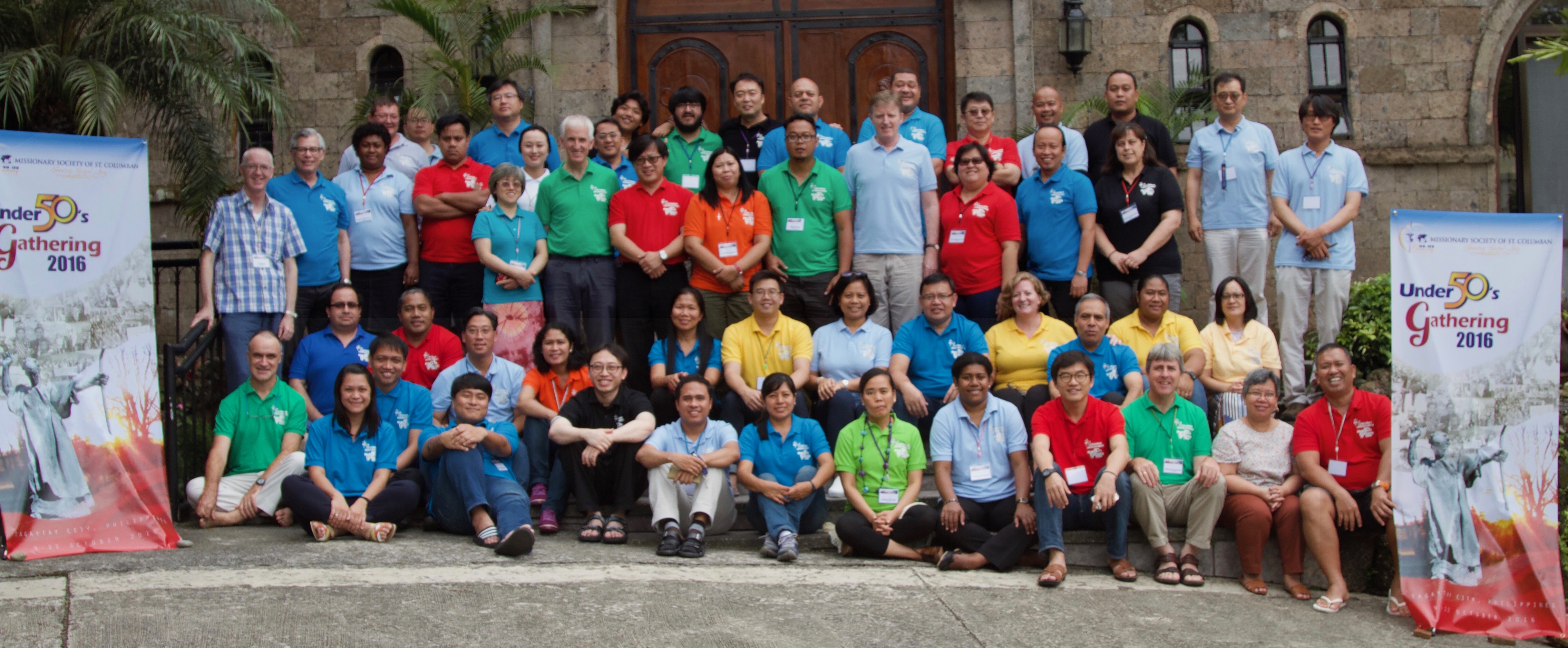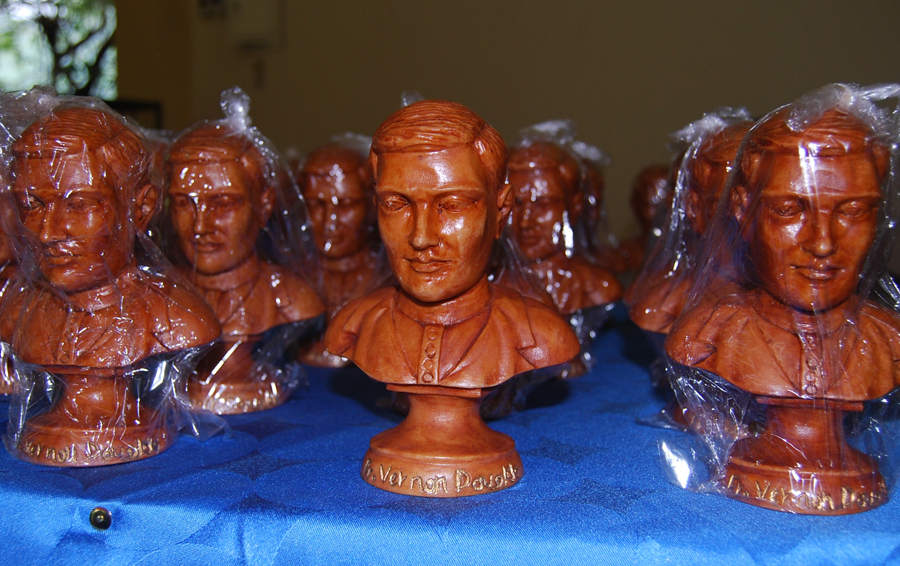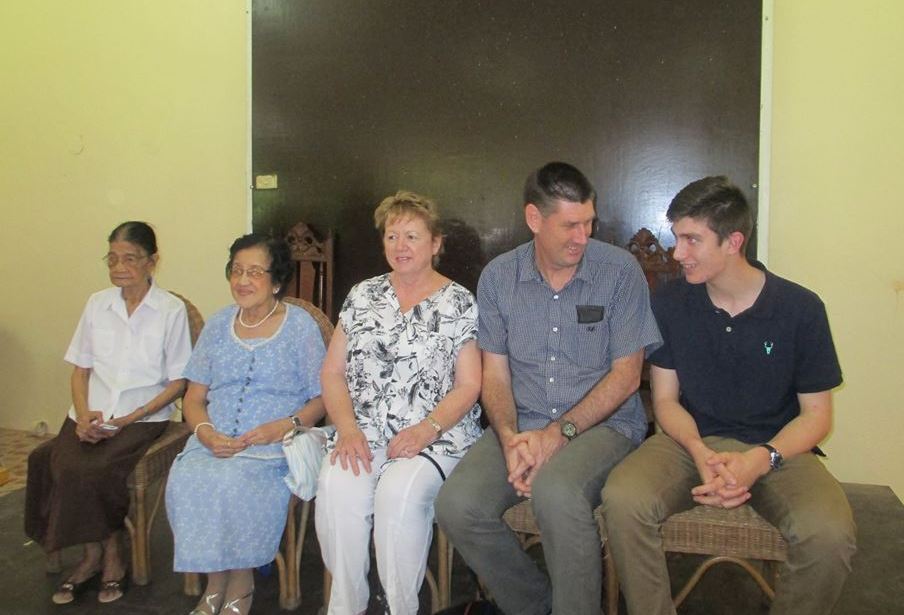Pulong ng Editor

Co-founders Fr Edward Galvin and Fr John Blowick (seated) with Fr Owen McPolin, China 1920
On Sunday 9 October this year 31 priests and 16 lay missionaries went to Tagaytay City for a two-week meeting of Columbans under the age of 50. Among them was our Superior General, Fr Kevin O’Neill, who in a recent letter wrote: On 9 October 1916, in a ground-floor room of the main college building at Maynooth [St Patrick's College, the National Seminary of Ireland], the 28-year-old Fr John Blowick had the nerve to face the Standing Committee of the Irish Bishops and to present his and Fr Edward Galvin’s scheme for a new mission. After about half an hour’s talk with the bishops, [Michael] Cardinal Logue [Archbishop of Armagh] said that they were prepared to grant their approval for the two things Blowick requested, namely, the making of a collection in the country and the foundation of a Mission College in Ireland.

Under 50s' meeting of Columbans, Tagaytay City
That approval came the following day, 10 October 1916, exactly 100 years before the Columbans in Tagaytay City had their first full day of business. Fr O’Neill wrote: The ‘memorial’, drawn up by a committee of prominent clerics, was laid before the full body of the bishops on 10 October 1916 informing them that: ' . . . a vigorous movement, of which the heart is Maynooth College, has grown up among young Irish ecclesiastics to go forth and carry the light of the Gospel to the Chinese . . . The bishops rejoiced and were thankful to God for this new and striking evidence of the continued life of the ancient Irish missionary spirit.' After careful consideration the bishops approved the project.
This ‘vigorous movement’ of young diocesan priests and seminarians quickly became known as ‘The Maynooth Mission to China’ and developed into a more international group that formally became the Society of St Columban on 29 June 1918, the date we celebrate as our Foundation Day.

Bust of Fr Vernon Douglas, Paete, Laguna
Paete is noted for its woodcarvings
On 28 September, as you can read in this issue, a large group of those involved in the mission of the Columbans in the Philippines and elsewhere, and four very special visitors from New Zealand, went on a pilgrimage to two places particularly associated with Columban Fr Francis Vernon Douglas: Pililla, Rizal, with his life, and Paete, Laguna, with his torture and death at the hands of the Japanese in 1943. Like the original Columban priests, Fr Douglas was already a diocesan priest, of the Archdiocese of Wellington, when he joined the Society in 1938. Like many other Columbans he met a violent end, in the service of Jesus Christ and his people. Like Jesus, he was scourged at a pillar and was 33 when he died.
In his closing homily on 17 August 2014 at Asian Youth Day in Korea, where Columbans have worked since 1933, Pope Francis said, You are the heirs of a great testimony, a precious witness to Christ. Part of that testimony for us is the sacrifice of Fr Douglas. Pray for all our younger Columban priests, seminarians and lay missionaries that they may take those words of the Pope to heart along with what he said later in his homily: You are not only a part of the future of the Church; you are also a necessary and beloved part of the Church’s present!

L to R: Miss Dominga Bayocot, Mrs Aurelia Cadapan with Fr Douglas’s relatives in Paete, Mrs Verne Turner, her cousin Vernon Douglas and his son Brendan
During November we remember the dead in a special way in our prayers. Please pray for the soul of Mrs Aurelia ‘Auring’ Cadapan of Paete, one of the two witnesses to the sufferings of Fr Douglas who spoke to us during the pilgrimage to Pililla and Paete on 28 September, the other being Miss Dominga Bayocot. She died a few weeks later, aged 88. Her ‘family and neighbors shared that Aurelia was full of great joy these last weeks and was so pleased that the pilgrimage had happened’. May she rest in peace.
